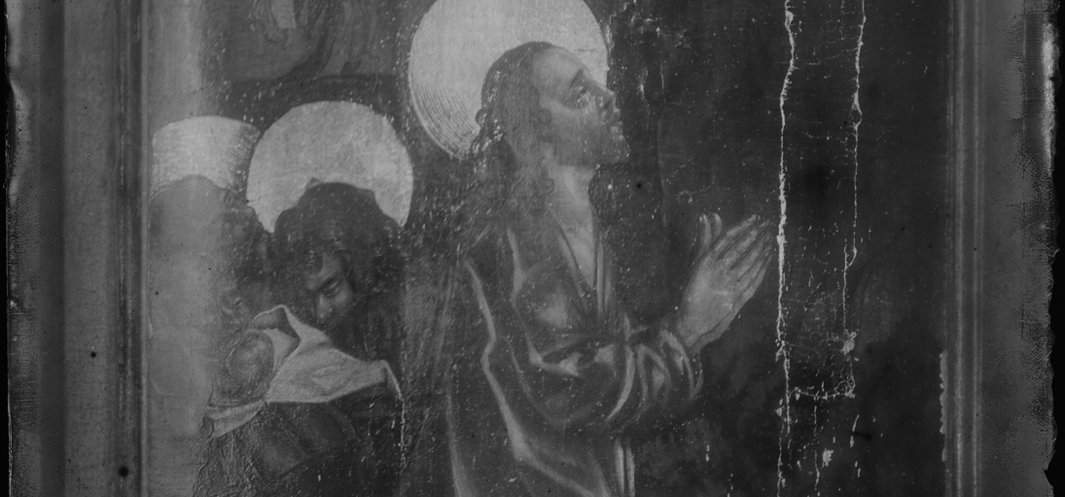The wartime fate of The Polyptych of Lusina
Based on Nazi inventories of artworks and handover protocols prepared by the Mühlmann Office that have been preserved from the occupation period, as well as catalogs and publications accompanying two exhibitions organized by the Institut für Deutsche Ostarbeit (IDO, English: Institute of German Works in the East) in 1941 and 1942 that featured the Lusina retable, it could be established that the shrine and internal wings with carved reliefs were secured in 1939 and documented in the catalog of the Sichergestellte Kunswerke im Generalgouvernement (Seized Works of Art in the General Government) under number 247. The handover protocol dated March 1, 1940, verifies their confiscation by the Dienststelle Mühlmann, led under the direction of Prof. Dr. Kajetan Mühlmann, an Austrian art historian, which played a central role in the looting and exportation of artworks from Poland, Eastern Europe, and later also the Netherlands.
In July 1941, the retable was featured at an exhibition dedicated to the art of Veit Stoss, organized at Collegium Maius of the Jagiellonian University, then the headquarters of the Institut für Deutsche Ostarbeit in Krakow. Ewald Behrens, an art historian who provided a description of the altar, focused primarily on the central shrine depicting the Holy Family and the wings showcasing reliefs narrating Mary's life. He only briefly mentioned the crucifixion cycle adorning the reverse of the wings. This observation, along with corroborating evidence from other German sources documenting the polyptych from Lusina, suggests that at that time it functioned as a triptych, comprising the central shrine and one pair of wings.
Between July 1941 and June 1942, the triptych underwent conservation work overseen by Eduard Kneisel, an Austrian restorer employed by the Dienststelle Mühlmann as a head of the Nazi’s conservation department in Krakow.
In June 1942, compared to the previous year, only two carved reliefs from the right wing depicting the Dormition of Mary and the Legend of St. Theophilus of Adana were exhibited at the Institut für Deutsche Ostarbeit in Krakow (Collegium Maciuś, UJ) as part of the exhibition "Altdeutsche Kunst aus Krakau und dem Karpathenland".
Given the limited information available regarding the exact timing and circumstances surrounding the dismantling and looting of the Lusina polyptych's parts, researcher delved into the archives and query departments of the National Museum in Krakow and the National Museum in Warsaw, where the recovered fragments of the altar were eventually restituted after the war. These investigations yielded previously unknown insights. Contrary to previous assumptions, the retable had been partially dismantled prior to its removal from Krakow. The most valuable portions (according to the occupiers) – including the central relief from the shrine depicting the Holy Family and the Marian cycle panels portraying the Annunciation, Nativity Scene, the Death of Mary, and the Legend of St. Theophilus of Adana – were stolen and taken away from Krakow or even Poland.
A particularly intriguing discovery involved one pair of polyptych wings that had been deposited in the museum depository at Wawel Castle. These wings were returned to the National Museum in Krakow in June 1945, and the handover protocol described them as [wings] "(...) without sculptures". This suggests that the inner pair of wings was meant, although the text does not provide absolute certainty.
The post-war digitization of American military archives holds further information about the missing sections of the Lusina polyptych. The National Archives and Records Administration (NARA), specifically the digitized records of the Monuments, Fine Arts and Archives Program (MFA&A), which were tasked with recovering looted artworks in the American zone of Germany and Austria, offer a glimpse into the search for the Lusina altarpiece. In August 1947, the Polish Embassy reached out to the MFA&A inquiring about the missing fragments of the polyptych. They received a response from the Wiesbaden Central Collecting Point, one of four central locations where looted artworks were catalogued and stored, stating the absence of any pieces matching the description of the Lusina altar. This absence suggests that the looted sections of the polyptych might have been transferred to other storage facilities beyond southern Germany and Austria. Perhaps they were sent to Lower Silesia or other regions of Germany.
Three out of the five scenes carved in wood – the Annunciation, the Nativity, and the Death of Mary – were recovered and returned to Krakow in February 1948. Their journey back to Poland passed through Warsaw.
